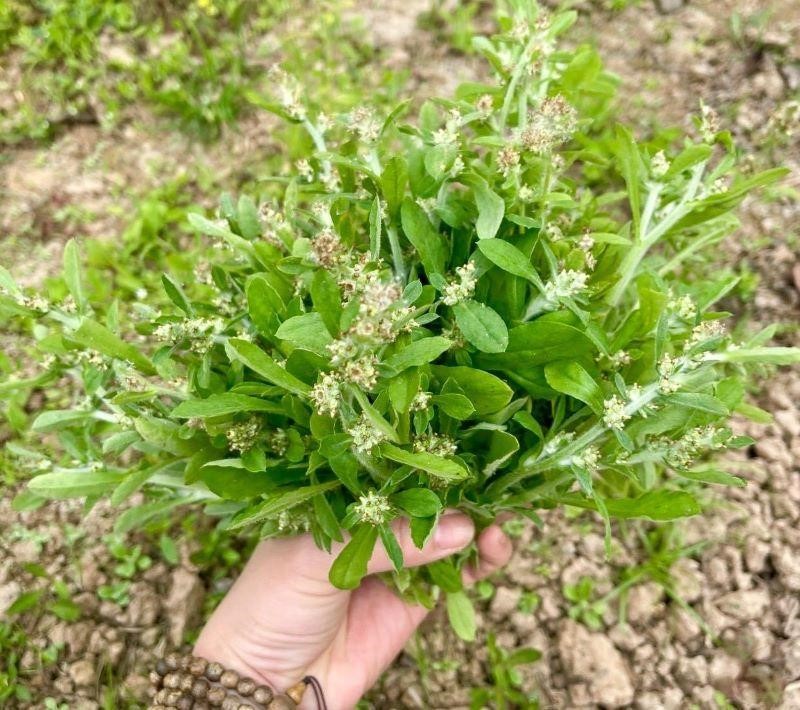Rau khúc is well-known among the Vietnamese people as a common ingredient for daily dishes, such as soups, boiled dishes, or bánh khúc (a traditional rice cake). However, few are aware that this herb also serves as a medicinal remedy that can treat various common ailments.
1. Identifying Characteristics of Rau Khúc
Rau khúc, known by various names such as hoa cúc, cúc tần, and cúc vạn thọ, is commonly found in moist areas near fields, roadsides, and around lakes. Its scientific name is Gnaphalium affine D. Don (formerly Gnaphalium multiceps Wall.), and it belongs to the Asteraceae family.
Natural Characteristics
- Growth: The plant grows in clusters, reaching a height of about 20-30 cm.
- Appearance: The entire plant is covered with a layer of white hairs.
- Leaves: The leaves are lance-shaped, pointed at the tip, and grow alternately, measuring about 4-6 cm long, with prominent veins on the underside.
- Flowers: The flowers grow in clusters at the top of the stem, with small yellow petals about 2 mm in size, typically blooming from March to May.
- Fruits: The fruit is egg-shaped.

Rau khúc is commonly used in Vietnamese meals, and the leaves or the entire stem is harvested for culinary or medicinal purposes, ideally before the flowers bloom. It can be used fresh or dried.
2. Uses and Remedies from Rau Khúc
In addition to being used in cooking, such as in soups and sticky rice dishes, rau khúc is recognized for its numerous health benefits.
Health Benefits
In Traditional Chinese Medicine, rau khúc is known for its neutral properties and sweet taste, offering benefits such as:
- Cough Relief: Helps reduce cough and phlegm.
- Heat Clearing: Aids in detoxification.
- Respiratory Support: Useful for treating colds and asthma.
- Joint Pain Relief: Alleviates joint pain and rheumatism.
- Skin Issues: Effective for abscesses and inflammation.
In modern medicine, rau khúc provides the following benefits:
- Anti-inflammatory Properties: Promotes healing of wounds and damaged tissues.
- Supports Sexual Health: Aids in treating impotence and constipation.
- Pain Relief: Reduces pain and swelling in gout patients when applied topically.
- Mood Improvement: Can act as a mild diuretic and alleviate depression.
- Sleep Aid: Dried flowers can be placed in pillows to enhance sleep quality.
- Mouthwash: Used to gargle for treating infections and oral ulcers.

Notable Remedies
Here are some effective remedies using rau khúc:
- Cough and Phlegm: Boil 20g of rau khúc with rock sugar and drink daily. Alternatively, chop the leaves, add some sugar, and steam to extract the juice.
- Cold Relief: Brew a tea with rau khúc, perilla, and mint for daily consumption.
- Bronchitis Treatment: Boil rau khúc until concentrated to about 3 cups; divide into three doses for a day over 12 days.
- Sore Throat: Prepare a decoction with rau khúc, ephedra, and almonds.
- High Blood Pressure: Combine rau khúc with other herbs and consume daily or include it in meals to enhance efficacy.
- Abscess Treatment: Crush fresh leaves and mix with cold rice, then apply to abscesses.
3. Precautions When Using Rau Khúc
Despite its many health benefits, rau khúc may not be suitable for everyone. Here are important considerations:
- Consult a Doctor: Always seek medical advice before using rau khúc for any health issues.
- Follow Medical Guidance: Adhere to prescribed dosages and avoid self-medicating.
- Inform Healthcare Providers: Notify your doctor if you’re taking any medications or supplements before using rau khúc.
- Avoid in Certain Groups: Pregnant women, breastfeeding mothers, young children, and those with allergies to Asteraceae plants should refrain from using it.
- Watch for Side Effects: Symptoms like rashes, nausea, dizziness, or digestive issues may occur. Discontinue use and seek medical help if necessary.
- Short-term Use: Use rau khúc for a limited time; if symptoms persist, consult a healthcare professional for alternative treatments.
- Caution with Medications: Avoid combining rau khúc with Western medications without professional advice, as it may affect treatment outcomes.
While rau khúc is generally considered safe and beneficial, caution is still advised. Regular health check-ups can help identify any underlying issues and ensure safe use of this herb.





